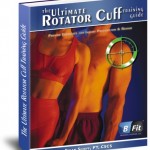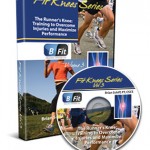Brian Schiff’s Blog
Injury Prevention, Sports Rehab & Performance Training Expert
This is a follow-up to my previous post with respect to scapular strengthening for optimal shoulder function. Serratus anterior weakness is a common issue with overhead athletes, especially throwers. It may present clinically as scapular winging, however, it often fatigues quickly with repetitive throwing and contributes to scapular dyskinesia and shoulder dysfunction. Since throwing is an asymmetrical activity, I like to include some unstable and progressive strengthening exercises for the dominant arm.
In the video below (as part of my ‘Functionally Fit’ column for PFP Magazine) I will demonstrate how to use a bottom up kettle bell approach to strengthen the serratus anterior muscle.
To see the full article with progressions and regressions check out the link below:
http://fit-pro.com/article-4136-Unilateral-bottom-up-serratus-punch.html
In the case of shoulder pain and dysfunction, the lower trapezius and serrates anterior are often implicated as part of the problem. Research has shown that these two muscles often fatigue and don’t contribute equally to the force couple between them and the upper trapezius that facilitates upward rotation of the scapula.
Building scapular stabilization and dynamic stability is a must for those doing repetitive overhead activities such as throwing, swimming, serving, or work-related tasks. It is a given that asymmetries will exist, so optimizing the strength of the rotator cuff and scapular stabilizers is paramount to prevent injury and recover from overuse syndromes.
To strengthen the lower trapezius, one of my ‘go to’ exercises is the lower trap raise. It can be done with just the weight of your arms or using light dumbbells. The link below includes the full description for the exercise, and I also embedded the video below.
http://fit-pro.com/article-4137-Lower-trap-raise.html
In the next column, I will include a serratus anterior exercise using a kettle bell as a follow-up to this post.
I work with a lot of baseball players in my clinic. In many cases, I see similar issues and recurring problems in them, especially pitchers. Some of these issues include:
- Scapular dyskinesia
- Limited thoracic spine mobility (extension and/or rotation)
- Soft tissue tightness (lats, post shoulder, pec major/minor)
- Poor muscular strength/endurance in the rotator cuff and scapular stabilizers
- Glenohumeral internal rotation deficit (GIRD)
I integrate routine mobility exercises for my throwers, as well as other overhead athletes (tennis, swimming, volleyball, etc) to better prepare them for training and their sport, as well as prevent poor mechanics and compensatory motion that may lead to aberrant stress on the rotator cuff and labrum.
The following video reveals five of my preferred exercises using a foam roller to improve thoracic spine mobility, decrease latissimus tightness, and stretch the pec major/minor while facilitating lower trapezius activation.
In order you will see:
- Lat rolling
- T-spine extension in supine
- T-spine extension coupled with lat stretch
- T-spine rotation
- Retraction and downward rotation
I advise performing 5-10 repetitions of each prior to training and sport. These will help improve performance, optimize overhead mechanics and reduce injury risk associated with overhead sports.
It is time to clear out some product inventory this year. To that end, I am offering a 50% off sale for one week only. This sale is on all physical products as well as e-books. I am also offering this discount on my printed version of the Ultimate Rotator Cuff Training Guide, of which I only have five remaining copies.
Simply enter code BFIT50 at checkout to save 50% on your entire order. Click Here to view all products.
This sale will end Monday July 18, so act now while supplies last.
There are several things that contribute to shoulder impingement and rotator cuff pain. Perhaps one of the biggest issues that impacts overhead athletes, Crossfit enthusiasts and the avid weight lifter is limited shoulder mobility. Poor flexibility in the pecs, lats, posterior shoulder as well as limited thoracic spine extension and rotation all contribute to suboptimal movement.
Poor mobility can place the scapula in biomechanically flawed positions, increase glenohumeral internal rotation and restrict shoulder movement at end range creating compensatory movement and pain. The video below is a snippet from my upcoming webinar on rotator cuff dysfunction and nonoperative treatment.
This webinar will be great for strength coaches, exercise enthusiasts, Crossfit athletes/coaches, athletic trainers and physical therapists. If you want to attend the webinar or catch the on-demand version, simply visit www.alliedhealthed.com. In addition, you may find my DVD on rotator cuff training very helpful in overcoming shoulder pain and staying pain free in the gym.
Click here to see a brief video overview of the DVD or visit my site at www.BrianSchiff.com for more info. Use the code Holiday15 at checkout from today until December 25 to save $10 off the retail price.
Have a great Thanksgiving and enjoy your time with family and friends!



